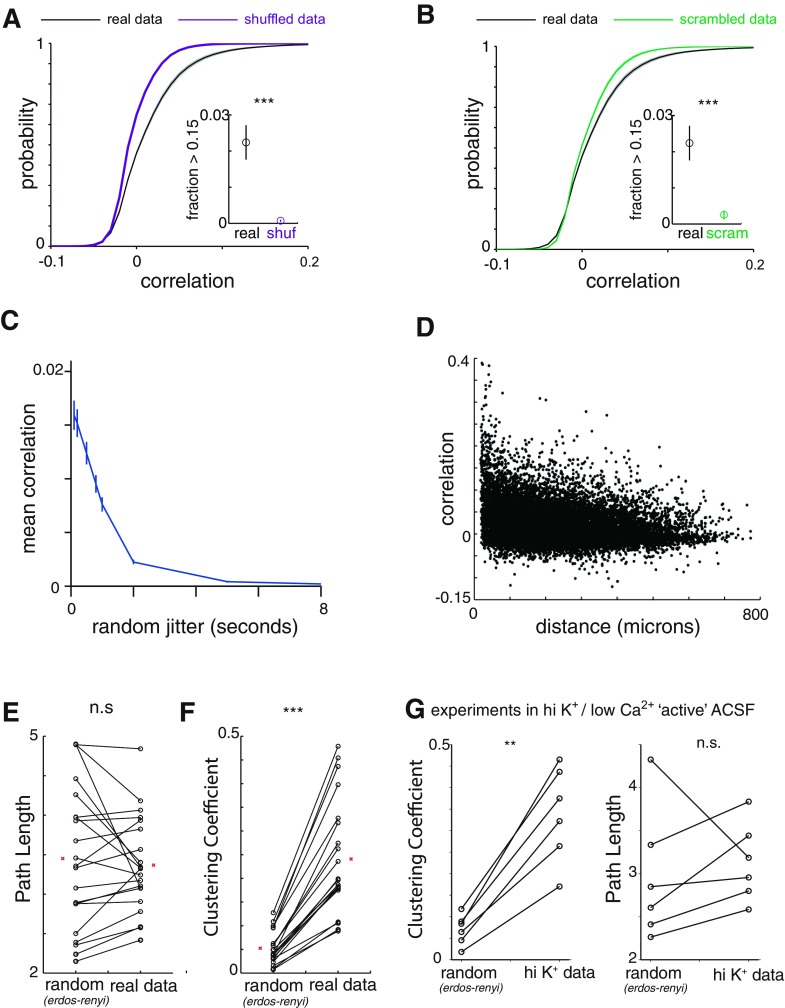Fig. 2.
Spontaneous prefrontal network activity is enriched in positive correlations and events in which multiple neurons are coactive. A: cumulative probability distributions for correlations in original data sets (“real”; n = 29 experiments) vs. those observed in data shuffled by shifting each neuron's event train by a different random amount (“shuffled”). Inset: fraction of correlations > 0.15, a level of correlation that is extremely rarely observed in shuffled data sets. ***P < 0.001 by Wilcoxon rank sum test. B: cumulative probability distributions for correlations in original data sets (n = 29 experiments) vs. randomly reassigning the neuronal identity associated with each event (“scrambled”). Inset: fraction of correlations > 0.15, a level of correlation that is extremely rare in shuffled data sets. ***P < 0.001 by Wilcoxon rank sum test. C: mean correlation of data sets when each event is randomly reassigned to within a plus or minus range of jitter ranging from 100 ms (1 frame) to 8 s (80 frames). Most correlation is abolished by jitter of 1–2 s. D: correlations between neurons plotted as a function of distance between those neurons. The correlation is weakly related to the distance between 2 neurons, but high correlations occur even at large distances. E: average path length (right) and average path length of a random Erdos-Renyi connected network of the same number of nodes and edge probability (left). n.s., Not significant. F: average clustering coefficient (right) and average clustering coefficient of a random Erdos-Renyi connected network of the same number of nodes and edge probability (left). ***P < 0.001 by Wilcoxon rank sum test. G: we constructed networks based on the pattern of strong correlations in data sets recorded with a high K+, low Ca2+ “active” ACSF instead of carbachol to elicit activity. These “active ACSF” data sets also display random path lengths and nonrandom clustering, characteristic of a small-world topology. **P < 0.01 by Wilcoxon rank sum test.

